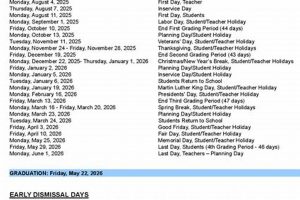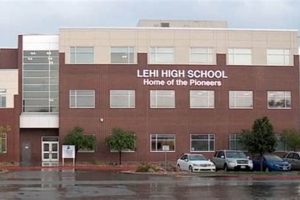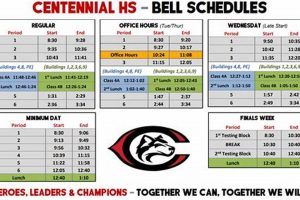A structured assessment designed to gauge adolescents’ preferences and passions across various domains, including academic disciplines, careers, extracurricular activities, and hobbies, typically involves a series of questions or prompts requiring individuals to express their level of interest or engagement in specific areas. These assessments can take various forms, from simple checklists and questionnaires to more complex, computer-based evaluations. An example would be a survey asking students to rate their level of interest in activities such as writing, scientific experiments, playing a musical instrument, or leading a team.
Such assessments provide valuable self-discovery opportunities, helping students gain awareness of their inclinations and potential career paths. By identifying areas of genuine interest, these tools can inform academic choices, guide exploration of extracurricular pursuits, and facilitate informed decision-making regarding future career options. Historically, understanding individual interests has played a role in vocational guidance and counseling, evolving from basic aptitude tests to more nuanced assessments incorporating personality and values. These insights empower educators and counselors to provide more targeted support, enabling students to align their educational and career aspirations with their natural aptitudes and passions. This alignment contributes not only to improved academic performance but also to increased engagement and overall well-being.
This article will further explore specific types of these assessments, their practical applications in educational settings, and their impact on student success. It will also address the role of educators and counselors in utilizing these valuable tools to guide students toward fulfilling academic and career pathways.
Tips for Utilizing Interest Assessments
Effective use of interest assessments requires careful consideration of several factors. The following tips provide guidance for maximizing the benefits of these tools for high school students.
Tip 1: Encourage Honest Self-Reflection: Accurate results depend on candid responses. Students should be encouraged to answer honestly, focusing on genuine interests rather than perceived expectations or external pressures.
Tip 2: Provide a Supportive Environment: A safe and non-judgmental atmosphere fosters open exploration. Students should feel comfortable expressing their interests without fear of criticism or ridicule.
Tip 3: Utilize Multiple Assessment Methods: Different assessments offer varying perspectives. Employing a combination of questionnaires, interviews, and experiential activities can provide a more comprehensive understanding of individual interests.
Tip 4: Connect Results to Real-World Opportunities: Translate assessment results into tangible exploration. Link identified interests to relevant academic courses, extracurricular activities, career shadowing programs, and internship opportunities.
Tip 5: Recognize the Evolving Nature of Interests: Interests can change over time. Regularly revisit and reassess interests to ensure alignment with evolving aspirations and goals. Encourage ongoing self-reflection and exploration.
Tip 6: Integrate Results into a Comprehensive Guidance Plan: Assessment results should inform, not dictate, decision-making. Integrate findings into a broader guidance plan encompassing academic planning, career exploration, and personal development.
Tip 7: Collaborate with Parents and Educators: Open communication fosters a supportive ecosystem. Sharing assessment results with parents and educators facilitates collaborative efforts to guide students toward fulfilling pathways.
By following these guidelines, the value of interest assessments can be maximized, empowering students to make informed decisions about their academic and career futures. These tools provide a crucial foundation for self-discovery, enabling students to connect their passions with real-world opportunities.
The following section will explore case studies demonstrating the practical application of interest assessments and their positive impact on student outcomes.
1. Self-Discovery
Self-discovery forms a cornerstone of adolescent development, particularly during the pivotal high school years. Interest inventories provide a structured framework for this exploration, enabling students to gain valuable insights into their aptitudes, preferences, and potential career paths. Understanding one’s strengths and interests is essential for informed decision-making regarding academic pursuits, extracurricular activities, and future career options.
- Recognizing Intrinsic Motivations
Interest inventories help uncover intrinsic motivations the inherent drives and passions that fuel engagement and satisfaction. For example, a student might discover a strong interest in problem-solving, leading to an exploration of STEM fields. Recognizing these internal drivers empowers students to pursue activities aligned with their natural inclinations, fostering a sense of purpose and fulfillment.
- Identifying Untapped Potential
These assessments can reveal hidden talents and unexplored areas of interest. A student initially hesitant about creative writing might discover a latent aptitude and passion through an inventory’s prompts, leading to participation in writing workshops or journalism clubs. Uncovering these hidden potentials expands horizons and opens doors to new possibilities.
- Clarifying Values and Priorities
Interest inventories often incorporate questions related to values, helping students articulate their priorities and connect them to potential career paths. A student prioritizing social impact might identify careers in social work, public health, or environmental advocacy. Clarifying values provides a compass for navigating future choices and aligning aspirations with personal beliefs.
- Building Self-Awareness
By providing a structured framework for reflection, interest inventories foster self-awareness, enabling students to articulate their strengths, weaknesses, and preferred learning styles. This self-knowledge empowers them to advocate for their educational needs, seek appropriate support, and make informed decisions about their learning journey. Increased self-awareness contributes to greater confidence and resilience in navigating academic and personal challenges.
These interconnected facets of self-discovery, facilitated by interest inventories, empower high school students to make informed decisions about their future. By understanding their motivations, recognizing their potential, clarifying their values, and building self-awareness, students can embark on a path of purposeful exploration, leading to fulfilling academic and career outcomes.
2. Career Exploration
Career exploration represents a crucial phase in adolescent development, and interest inventories serve as valuable tools in this process. These inventories provide a structured approach to exploring potential career paths aligned with individual interests, aptitudes, and values. By identifying areas of genuine interest, students can begin to research related careers, investigate required education and training, and consider potential long-term career goals. This exploration often reveals previously unconsidered career options, expanding horizons and fostering informed decision-making. For instance, a student with a strong interest in visual arts might explore careers in graphic design, animation, or architecture through an interest inventory, leading to further research into art schools and portfolio development.
The practical significance of connecting interest inventories with career exploration lies in its ability to bridge the gap between personal passions and real-world opportunities. This connection empowers students to visualize potential career paths aligned with their intrinsic motivations, fostering a sense of purpose and direction. Furthermore, early career exploration allows students to make informed decisions about their academic coursework, selecting subjects that support their chosen career trajectory. This proactive approach optimizes educational experiences and prepares students for future success. For example, a student interested in engineering might choose advanced mathematics and physics courses in high school, laying a solid foundation for future engineering studies. This foresight and planning can significantly impact long-term career prospects.
Integrating career exploration into the high school experience offers numerous benefits. It facilitates the transition from adolescence to adulthood, providing a framework for informed decision-making about future pathways. It reduces anxiety related to career uncertainty, empowering students to approach their future with confidence and a sense of direction. Finally, it fosters a sense of ownership over the career development process, encouraging students to actively participate in shaping their future. Addressing the challenge of career indecision proactively through interest inventories and exploration equips students with the tools and knowledge necessary to navigate the complexities of the modern job market and pursue fulfilling career paths.
3. Academic Planning
Academic planning benefits significantly from the insights provided by interest inventories. These inventories, by identifying a student’s inherent interests and aptitudes, inform course selection, extracurricular involvement, and long-term academic goals. This alignment between academic pursuits and individual passions enhances motivation, engagement, and ultimately, academic performance. For instance, a student with a strong interest in literature, identified through an inventory, might choose advanced placement English courses, join a creative writing club, and potentially pursue a literature degree in college. Conversely, neglecting to consider individual interests in academic planning can lead to disengagement, lower academic performance, and ultimately, difficulty in identifying a fulfilling career path. A student forced into a STEM track despite a clear interest in humanities might struggle with motivation and find it challenging to excel.
The practical significance of incorporating interest inventories into academic planning is evident in several ways. Students who pursue subjects aligned with their interests are more likely to experience academic success, demonstrating higher levels of engagement, improved grades, and increased persistence in challenging courses. Moreover, aligning academic pursuits with individual interests facilitates a smoother transition to post-secondary education. Students can confidently choose majors and career paths that resonate with their passions, leading to greater satisfaction and success in their chosen fields. For example, a student passionate about history, as revealed by an interest inventory, might focus on history courses, participate in historical debates, and eventually pursue a history degree, leading to a fulfilling career as a historian or archivist.
Integrating interest inventories into academic planning empowers students to take ownership of their educational journey. By understanding the link between their interests and their academic choices, students develop a sense of purpose and direction. This proactive approach to academic planning fosters self-efficacy, promotes informed decision-making, and ultimately, equips students with the tools necessary to navigate the complexities of higher education and pursue fulfilling careers. Addressing the challenges of academic planning through personalized insights derived from interest inventories provides a crucial foundation for long-term academic and career success.
4. Skill Identification
Skill identification plays a crucial role in maximizing the benefits of interest inventories for high school students. While these inventories highlight areas of interest, understanding the underlying skills associated with those interests provides a more concrete foundation for career exploration and academic planning. This connection between interests and skills empowers students to translate their passions into actionable steps toward future goals. A clear understanding of one’s skills also fosters self-efficacy and provides a framework for targeted skill development.
- Transferable Skills
Transferable skills, applicable across various contexts, often emerge through pursuing interests. For example, a student interested in debating might develop strong communication and critical thinking skills transferable to fields like law, journalism, or education. Recognizing these transferable skills broadens career options and provides a versatile foundation for future success. Interest inventories, coupled with skill identification, illuminate these transferable skills, empowering students to leverage their existing strengths in diverse settings.
- Technical Skills
Specific interests often require the development of specialized technical skills. A student interested in computer programming might cultivate coding proficiency, database management skills, or software development expertise. Identifying these technical skills early on allows students to seek relevant training opportunities, workshops, or specialized courses, preparing them for specific career paths. Interest inventories can act as a catalyst for exploring and developing these essential technical skills.
- Problem-Solving Skills
Many interests cultivate valuable problem-solving skills. For instance, a student engaged in robotics clubs might develop analytical thinking, logical reasoning, and troubleshooting abilities. These problem-solving skills are highly sought after in various fields, from engineering and science to business and management. Interest inventories can highlight activities that naturally foster these crucial skills, guiding students towards enriching experiences.
- Interpersonal Skills
Interests involving teamwork or collaboration often nurture interpersonal skills. A student participating in team sports, drama clubs, or student government might develop communication, leadership, and conflict-resolution skills. These interpersonal skills are essential for success in collaborative work environments and contribute to overall personal and professional development. Interest inventories can point towards activities that offer opportunities to hone these vital interpersonal skills.
By connecting identified interests with corresponding skills, students gain a more comprehensive understanding of their strengths and potential career paths. This integrated approach empowers students to make informed decisions about their academic pursuits, extracurricular activities, and future career goals. The insights gleaned from interest inventories, combined with a focus on skill development, provide a powerful framework for navigating the transition from high school to higher education and beyond.
5. Personalized Learning
Personalized learning represents a significant paradigm shift in education, tailoring educational experiences to individual student needs, interests, and learning styles. Interest inventories play a crucial role in facilitating this personalization by providing valuable insights into student preferences and aptitudes. This connection between interest inventories and personalized learning fosters increased student engagement, motivation, and ultimately, academic success. By aligning learning experiences with individual interests, educators can create more relevant and meaningful learning opportunities. For example, a student with a strong interest in history, identified through an interest inventory, might benefit from project-based learning assignments involving historical research and analysis, rather than traditional textbook-based approaches. This personalized approach caters to individual learning preferences and enhances knowledge retention.
The practical significance of this connection lies in its ability to transform the learning environment from a one-size-fits-all model to a customized experience. Personalized learning, informed by interest inventories, empowers students to take ownership of their education, fostering a sense of agency and purpose. This approach acknowledges that students learn at different paces and through different modalities. By tailoring instruction and assignments to individual needs, educators can maximize learning outcomes for all students. Furthermore, personalized learning, driven by interest inventories, addresses the diverse learning styles present in any classroom. Visual learners might benefit from graphic organizers and multimedia presentations, while kinesthetic learners might thrive in hands-on activities and simulations. This tailored approach optimizes the learning experience for each student, promoting deeper understanding and knowledge application.
Integrating interest inventories into personalized learning strategies presents several opportunities for enhancing the educational experience. It enables educators to differentiate instruction effectively, catering to the unique needs of each student. It fosters a more inclusive learning environment, ensuring that all students have access to learning experiences that resonate with their individual strengths and interests. Finally, it promotes a data-driven approach to education, allowing educators to track student progress and tailor instruction based on individual performance and learning needs. Addressing the inherent challenges of diverse learning styles and varying levels of student engagement through personalized learning, informed by interest inventories, provides a powerful framework for optimizing educational outcomes and fostering lifelong learning.
Frequently Asked Questions
This section addresses common inquiries regarding the utilization and benefits of interest inventories for high school students.
Question 1: How do interest inventories differ from aptitude tests?
Interest inventories focus on preferences and passions, while aptitude tests measure innate abilities and potential. Aptitude tests predict potential for success in specific areas, whereas interest inventories identify areas of enjoyment and engagement, which can inform career and academic choices. Both tools offer valuable insights but serve distinct purposes within the guidance process.
Question 2: How reliable are interest inventories in predicting long-term career success?
Interest inventories are not designed to predict career success with certainty but rather to provide a framework for self-discovery and exploration. They identify potential career paths aligned with individual interests, increasing the likelihood of job satisfaction and engagement. Long-term career success also depends on factors such as skill development, work ethic, and market opportunities.
Question 3: What is the recommended frequency for administering interest inventories to high school students?
Administering interest inventories can be beneficial at various points throughout high school, particularly during key transitional periods. A baseline assessment in early high school can initiate career exploration, while subsequent assessments can track evolving interests and refine academic plans. Regular reassessment acknowledges the dynamic nature of interests during adolescence.
Question 4: How can educators ensure the validity of interest inventory results?
Encouraging honest self-reflection is crucial for accurate results. Creating a supportive environment free of judgment or external pressures promotes candid responses. Utilizing multiple assessment methods, such as questionnaires combined with interviews or experiential activities, can further enhance the validity and depth of insights.
Question 5: How can interest inventory results be integrated into Individualized Education Programs (IEPs)?
Interest inventories can provide valuable information for developing and refining IEPs. Identified interests can inform the selection of relevant courses, extracurricular activities, and vocational training opportunities. Aligning IEP goals with student interests enhances motivation and promotes successful outcomes.
Question 6: What resources are available for interpreting and utilizing interest inventory results effectively?
Trained guidance counselors and career advisors play a critical role in interpreting results and connecting them to real-world opportunities. Numerous online resources, career exploration platforms, and educational materials also provide valuable support for understanding and applying insights gained from interest inventories.
Understanding these key considerations ensures appropriate and effective utilization of interest inventories as valuable tools for guiding student development.
The following section will delve into case studies demonstrating the practical application and impact of interest inventories on student success stories.
Interest Inventory for High School Students
This exploration of interest inventories for high school students has highlighted their crucial role in fostering self-discovery, guiding career exploration, informing academic planning, identifying essential skills, and enabling personalized learning. These assessments provide valuable insights into individual aptitudes and passions, empowering students to make informed decisions about their academic and career pathways. The connection between interests and future success underscores the importance of incorporating these tools into comprehensive guidance programs.
Effective utilization of interest inventories requires a thoughtful and integrated approach, recognizing the dynamic nature of adolescent development. Continued research and development of these assessment tools, combined with the dedicated support of educators and counselors, will further enhance their effectiveness in empowering students to navigate the complexities of education and career choices. Prioritizing the use of interest inventories represents an investment in student success, equipping individuals with the self-awareness and direction necessary to pursue fulfilling and purposeful futures.







